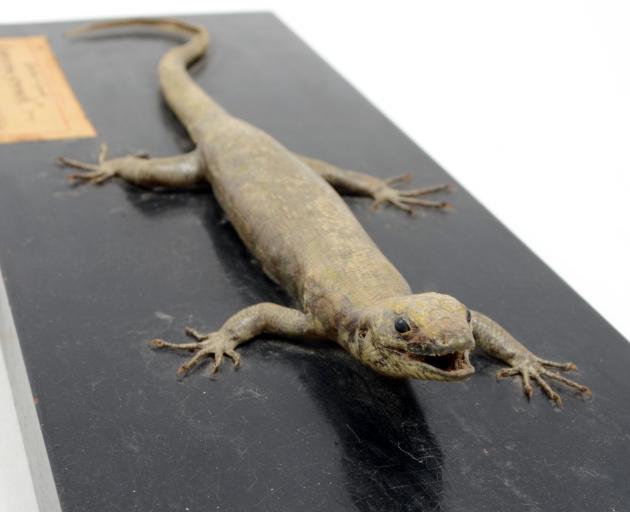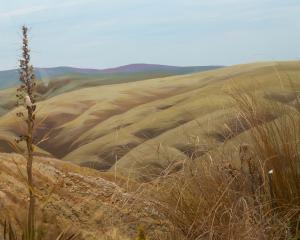
Skinks have slender and smooth skin, can blink their eyes and belong to the family Scincidae, which describes one of the most diverse groups of lizards in the world. Geckos have loose velvety skin, cannot blink their eyes and belong to the family Diplodactylidae, which includes geckos from New Zealand, Australia and New Caledonia. All native lizards are protected by law and there are many places in Dunedin where skinks are a common sight.
In Otago Museum's nature galleries, the lizards of Otago are featured in a diorama to showcase the different patterns and biology of each species. Recently, the museum received a gift of four mummified southern grass skinks that were found under the carpet during a home renovation in Portobello. This donation contributes to Otago Museum's collection of indigenous fauna and helps illustrate an interesting interaction between humans and native animals.

Most lizards live a hidden life, spending the majority of their time in cracks and crevices of rocks, going into the open only to bask in the sun or forage for insects and fruits. Skinks and other lizards play an important role in controlling insect populations, pollinating native flowers while drinking nectar from them and dispersing seeds after eating native fruits. Conservation efforts have focused on creating habitat by planting native shrubs and removing pest mammals, as skinks are vulnerable to introduced mammalian predators such as cats, rats and stoats.
If you find a sleek and shiny brown lizard in a garden around Dunedin, you are likely looking at a southern grass skink, also called a common skink. Genetic research on New Zealand skinks has revealed that there are regional differences and undescribed taxonomic diversity in many groups of New Zealand lizards including common skinks (Oligosoma polychroma). Several new skink species have been described in the past 10 years and many more lie in wait for researchers to understand the true diversity of New Zealand's mokomoko taoka.
*The exception being the egg-laying skink (Oligosoma suteri).
On Lee Lau is the collection officer, natural science, at Otago Museum.












